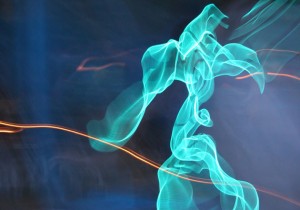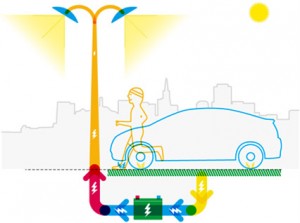
In our previous post on the Urban Field, creator Anthony Di Mari uses an energy called piezoelectricity to power his wind components. We were curious about this type of energy and wanted to learn more. Here is what we found!
Piezoelectricity is the ability of certain crystals to produce a voltage when subjected to mechanical stress. The most commonly used crystals for piezoelectricity are quartz, cane sugar, topaz, and tourmaline. Quartz powered clocks, airbag sensors, and some lighters use this form of energy to store a charge. Although, piezoelectricity has been around since the late 1800s, scientists are now looking into this technology to see what other types of uses it can have.
Research has proven that piezoelectricity can be used in roads and floors to generate energy. In fact, there are several cities around the world that now have piezoelectric streets and floors. In 2008, a piezoelectric floor was installed in the Tokyo railroad station. As passengers walk on the station’s floor, kinetic energy is generated. This energy is then used to power the ticket gates and station signage. Toulouse, France has also experimented with piezoelectricity. Instead of using the technology in flooring, the French installed the piezoelectric sensors in sidewalks. The stored energy for above passersby is then used to power street lamps.

Innowattech, an Israeli tech firm, is working on installing piezoelectric sensors in Israel’s highways. They call their design, “Innowattech Piezo Electric Generator,” or IPEG for short. Their generators will harvest energy from the weight, motion, vibration, and temperature changes of the roadways. The collected energy will then be stored and routed to a power grid. Innowattech claims that enough electricity can be produced from a 4 lane highway to power 2,500 homes. Imagine the possibilities if these sensors were used in the American highway system!

In America, a Princeton University research team also decided to look further into the abilities of piezoelectricity. The team created an ultra-efficient piezoelectric material by combining silicone and nanoribbons of lead ziconate titanate. They call this new material PZT and it is 100x more effective of storing energy than quartz. The researches hope that PZT can be used in the clothing and shoe industry because of PZT’s ability to harness energy from the smallest of vibrations. This means that in the future by wearing your jacket or pants made from PZT, you will able to charge your cell phone in your pocket wirelessly!
Similar to the research done at Princeton, further studies have been conducted using piezoelectricity and sound waves. As a sound is created the sound waves can be harvested to power nano and mirconano devices via piezoelectrics. The goal of this study is to prove piezoelectrics and sound vibrations can be used to power batteries and other small electronic objects. If this technology would be put into production, it would eliminate the need for batteries.
What do you think? Do you feel that piezoelectricity will be a viable energy source for the future or will companies opt not to use it? Keep the green ideas coming; we would love to hear your thoughts!